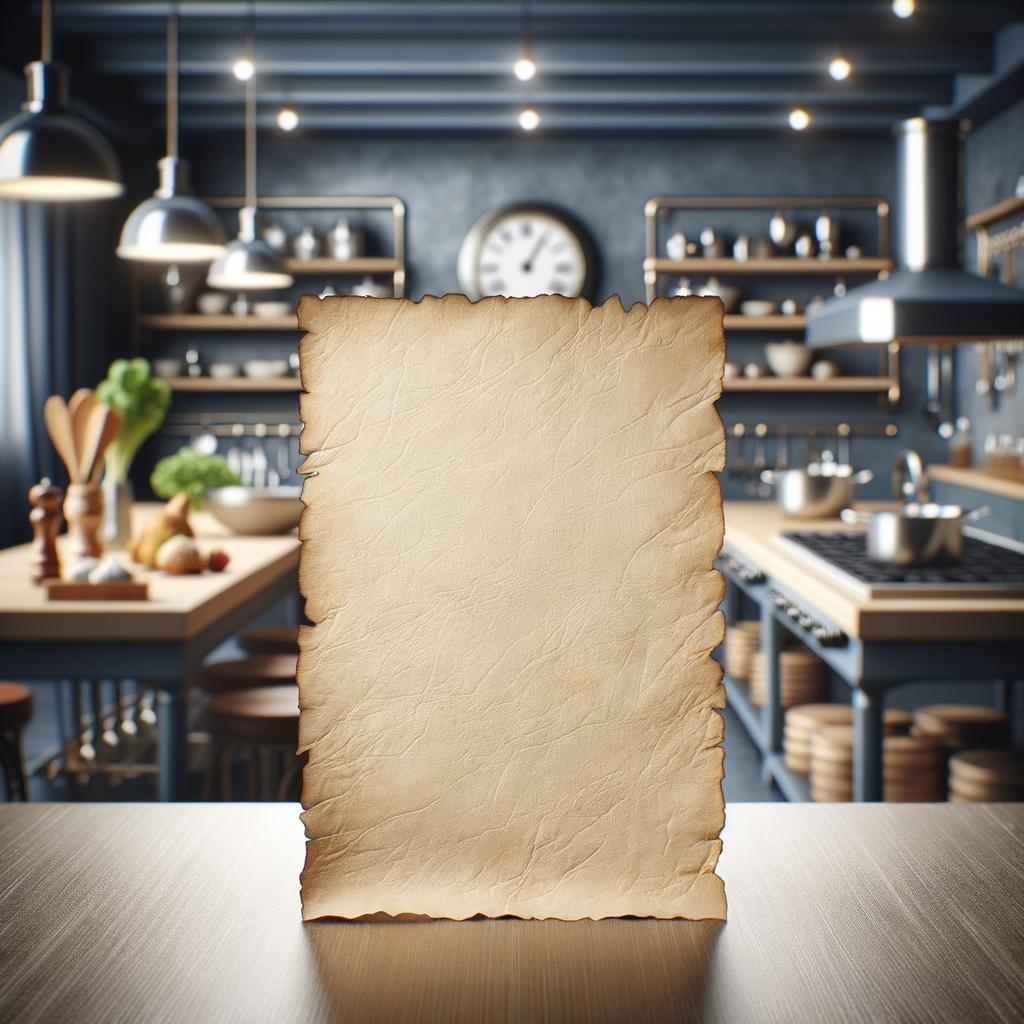Parchment Paper

Description
Parchment paper, a kitchen essential, is not your typical food ingredient, but rather a cooking tool with a culinary charm of its own. It is a cellulose-based paper that has been treated or coated to make it non-stick and heat-resistant. It has a smooth surface, often a shade of off-white, and is thin yet sturdy. Unlike its counterparts, wax or aluminum foil, parchment paper does not alter the flavor of the food, nor does it catch fire or melt easily in the oven, making it a unique and reliable companion in the kitchen.
Primary Uses
Parchment paper is a versatile tool in the culinary world. It is commonly used for lining baking sheets and cake pans to prevent sticking, ensuring a smooth release of your baked goods. It's a key player in a technique called 'en papillote' where food, often fish or vegetables, is enclosed in a parchment paper pouch and baked, allowing the ingredients to steam in their own juices. This method is prevalent in French cuisine. Parchment paper is also used to create disposable pastry bags and to separate layers of food items in the freezer. Its non-culinary uses include craft applications like making patterns in sewing and protecting surfaces during craft projects.
History
The history of parchment paper is an interesting one. It dates back to ancient Egypt where it was used for writing before the invention of paper. The term 'parchment' is derived from the name of the city of Pergamon, an ancient city in modern-day Turkey, where it was widely produced. In the culinary world, its popularity rose during the 19th century when chefs discovered its non-stick properties. There's an old baker's tale that parchment paper was the secret to the perfect French baguette, as it allowed the bread to slide smoothly out of the hot oven, preserving its crust and shape.
Nutritional Information
While parchment paper is not consumed and therefore does not contribute any nutritional value to a dish, it does play a significant role in nutrition. Its use can reduce the amount of oil or fat needed to prevent food from sticking to cookware, which can help lower the overall fat content in a meal. Additionally, cooking 'en papillote' is a healthy method as it requires minimal fat and preserves the nutritional value of the food by sealing in the moisture and nutrients. In comparison to aluminum foil, parchment paper does not leach any substances into food, making it a safer choice for cooking.

